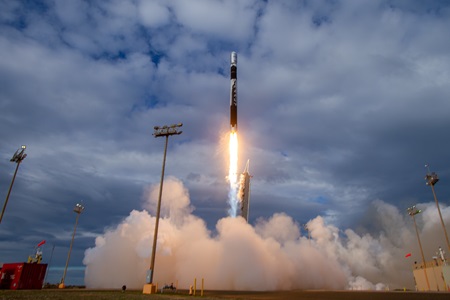 Firefly Aerospace has signed a multi-launch agreement with Lockheed Martin for 25 launches on Firefly’s Alpha rocket through 2029. This agreement commits Lockheed Martin to 15 launch reservations and 10 optional launches.
Firefly Aerospace has signed a multi-launch agreement with Lockheed Martin for 25 launches on Firefly’s Alpha rocket through 2029. This agreement commits Lockheed Martin to 15 launch reservations and 10 optional launches.
Bill Weber, CEO of Firefly Aerospace, said: “Firefly is honoured to continue this partnership with Lockheed Martin and appreciates their confidence in our rapid launch services to support their critical missions for years to come. The Firefly team has scaled up Alpha production and testing and significantly streamlined our launch operations to fly Alpha more frequently and responsively. This allows us to continue delivering the one metric ton rocket the industry is demanding.”
Under the agreement, Alpha will launch Lockheed Martin spacecraft into low-Earth orbit from Firefly’s facilities on the west and east coast. The first mission will launch on Alpha Flight 6 (FLTA006) from Firefly’s SLC-2 launch site at the Vandenberg Space Force Base later this year. The mission will be conducted as another responsive space operation that includes transporting the payload fairing to the launch pad, mating it to Firefly’s Alpha rocket, and completing final launch operations within hours of the scheduled liftoff.
Bob Behnken, Director of Ignite Technology Acceleration at Lockheed Martin Space, added: “Our customers have told us they need rapid advancement of new mission capabilities. This agreement with Firefly further diversifies our access to space, allowing us to continue quickly flight demonstrating the cutting-edge technology we are developing for them, as well as enabling our continued exploration of tactical and responsive space solutions.”
Built with lightweight carbon composites and patented propulsion technologies, Firefly’s Alpha rocket provides low-cost launch services for satellites up to 1,030 kg and supports the growing demand for responsive space missions when and where customers need to fly.














Add Comment